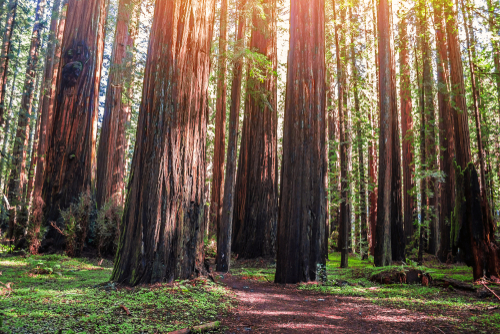Pine Trees: Different Types & How to Spot Them
April 22, 2024 5:26 pm Leave your thoughtsPine trees are a common sight in many landscapes, known for their tall trunks, needle-like leaves, and distinctive cones. There are various types of pine trees, each with its unique characteristics and features. From the towering Eastern White Pine to the compact Austrian Pine, here is a guide to different types of pine trees and how to spot them in the wild.
Different Types of Pine Trees
1. Eastern White Pine: The Eastern White Pine is one of the largest pine species, known for its tall stature and soft, flexible needles. This tree is native to eastern North America and is commonly found in forests, parks, and landscapes. The Eastern White Pine is known for its distinctive cone shape and blue-green needles, making it easy to spot in the wild.
2. Scots Pine: The Scots Pine is a hardy pine species native to Europe and Asia, known for its bushy appearance and thick, dark-green needles. This tree is widely cultivated for timber production and is often used in landscaping for its rugged, natural appearance. The Scots Pine can be identified by its distinctive orange-brown bark and long, twisted needles.
3. Austrian Pine: The Austrian Pine is a compact pine species with a rounded crown and dense foliage. Native to central and southern Europe, the Austrian Pine is known for its dark-green needles and large, egg-shaped cones. This tree is commonly planted in urban areas and parks for its tolerance to pollution and harsh growing conditions.
4. Ponderosa Pine: The Ponderosa Pine is a large pine species native to western North America, known for its tall, straight trunk and distinctive bark. This tree is prized for its high-quality timber and is commonly used in construction and woodworking. The Ponderosa Pine can be identified by its long, yellow-green needles and large, egg-shaped cones.
How to Tell What Kind of Pine Tree
Identifying different types of pine trees can be challenging, as many species share similar characteristics. However, several key features can help you determine what kind of pine tree you are looking at:
1. Needle Length: Pay attention to the length and color of the tree’s needles. Different pine species have needles of varying lengths, from short and stiff to long and flexible. In addition, needle color can vary from deep green to blue-green, yellow, or silver, depending on the species.
2. Cone Shape: Examine the size and shape of the tree’s cones. Some pine species have large, round cones, while others have small, egg-shaped cones. The color and texture of the cones can also provide clues to the tree’s species.
3. Bark Texture: Take note of the texture and color of the tree’s bark. Some pine species have smooth, gray bark, while others have rough, scaly bark with distinctive patterns. Bark texture can be a helpful indicator of the tree’s species.
4. Branching Pattern: Observe the tree’s branching pattern and overall shape. Some pine species have a tall, straight trunk with a uniform crown, while others have a bushy or irregular growth habit. The overall shape of the tree can help you narrow down the possible species.
Summary
By paying attention to these key features and characteristics, you can become better at identifying different types of pine trees in the wild. Whether you are a nature enthusiast, a hiker, or a homeowner looking to landscape your property, having the ability to spot and identify pine trees can enhance your outdoor experience and appreciation for these iconic trees.
Need Wooden Lodgepoles in Lapoint, UT?
Categorised in: Pine
This post was written by admin

